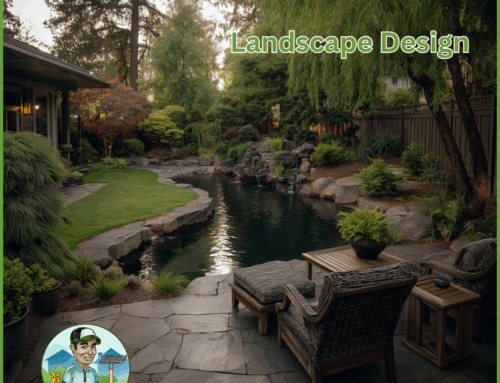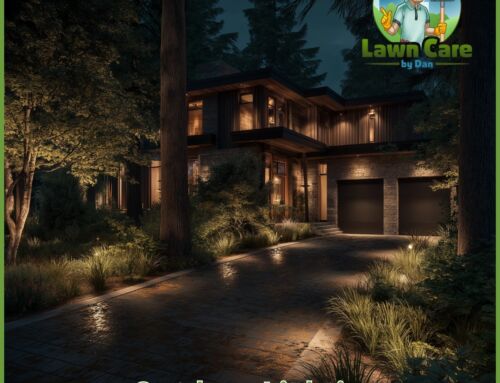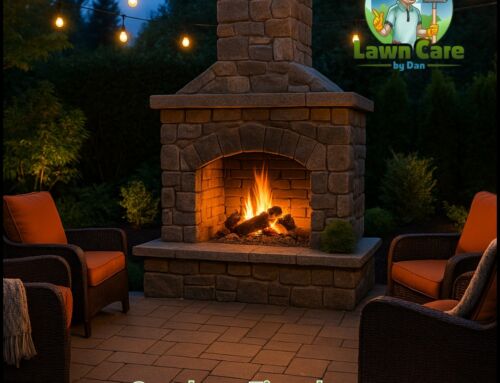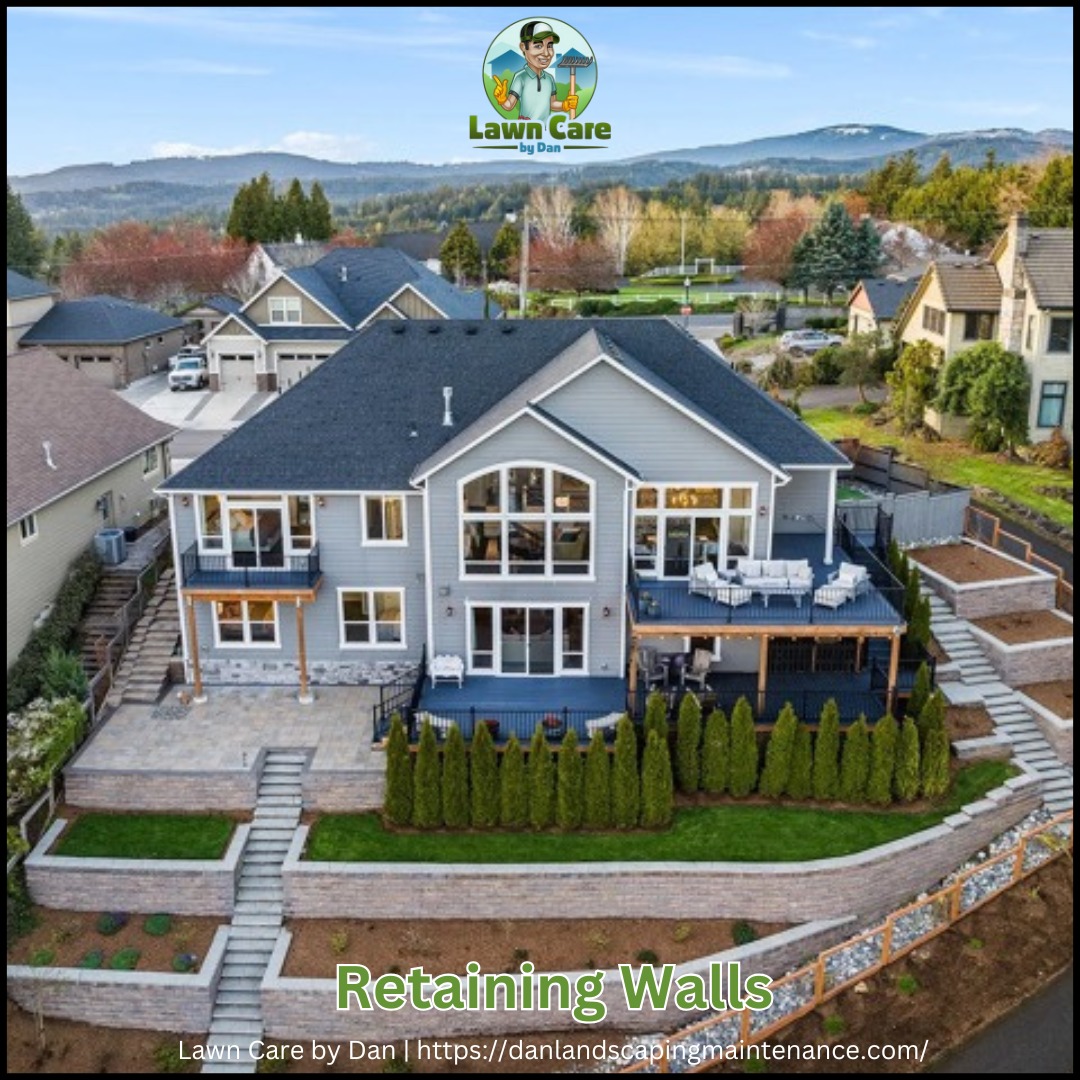
When hills turn into headaches and slopes steal your outdoor space, retaining walls offer a solid solution. These structures shape land into something usable, safe, and attractive. With the right build, they last for decades. That starts with planning. Lawn Care by Dan knows the difference between a wall that holds and one that caves. Let’s walk through the basics and the brilliance of retaining wall design.
Why Retaining Walls Matter
They Shape the Ground
Retaining walls hold back soil where nature tries to let it loose. They keep slopes from sliding and let you level land that otherwise sits unusable. These walls also deal with pressure from both dirt and water, so accuracy is not optional.
More Than Pretty
They protect patios, stop driveway sagging, and give gardens their edge. In both commercial and residential areas, retaining walls carve out space that wouldn’t otherwise exist.
The Wall Types You Should Know
Not all retaining walls are built the same. The right one depends on your slope, soil, and space. Each type brings a unique structure, strength, and installation method. Choose based on need, not just looks.
- Gravity Walls: Built using heavy stone or concrete, gravity walls resist soil pressure through sheer mass. They are straightforward and work best for walls under four feet high. Their simplicity makes them popular in residential gardens.
- Cantilevered Walls: These walls use a slab that extends under the soil to create leverage. The hidden base resists pressure more efficiently than gravity walls. They’re ideal for taller applications where strength matters most.
- Sheet Piling Walls: Designed for tight spaces or soft ground, these use vertical planks driven deep into the soil. They’re common along shorelines and construction zones. Materials include steel, vinyl, or wood, depending on the setting.
- Anchored Walls: When extra strength is required, these use cables or rods anchored into the earth behind the wall. Useful for tall or load-heavy installations. They hold steady even in loose or wet soils.
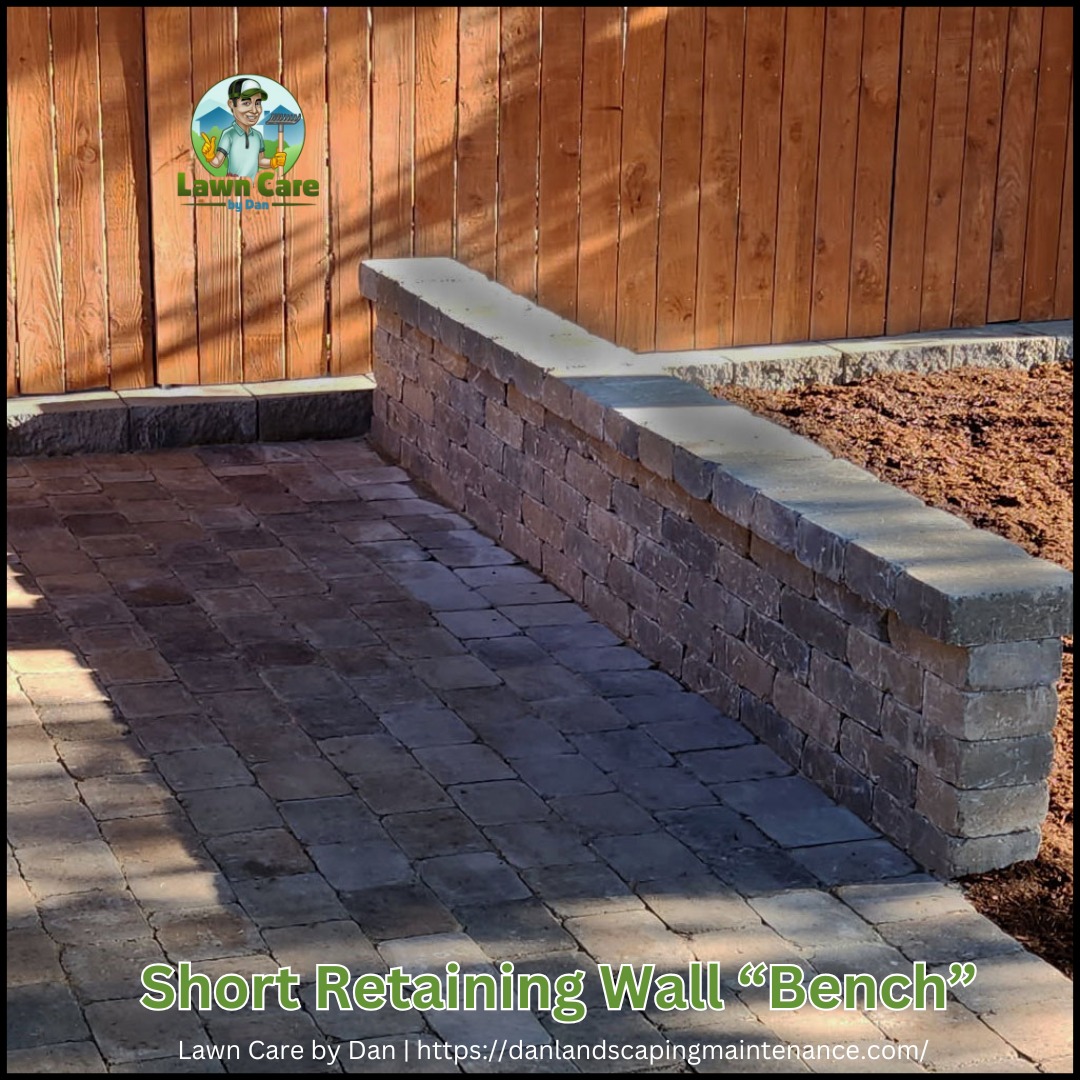
Picking the Right Material
Not all materials perform the same. Some shine in backyards. Others tackle serious slope challenges. The right choice depends on looks, location, and how long you want it to last.
- Wood: Natural and affordable, wood blends well with garden spaces. It’s easy to install for small retaining walls, but breaks down faster than other materials. Pressure-treated wood helps fight rot and bugs.
- Concrete: Concrete blocks or poured options handle almost any wall design. They’re versatile, sturdy, and low-maintenance. Concrete works well for long stretches or curved layouts.
- Natural Stone: Elegant and timeless, stone adds charm to any outdoor area. It’s strong, but heavy and expensive to install. Ideal for walls that double as decorative features.
- Brick: Classic and neat. Bricks give a traditional look and fit older home styles. For structural strength, especially in taller walls, they often need extra support.
- Steel: Best used in industrial or steep slope settings. Steel provides unmatched strength but must be treated to prevent rust. Often seen in commercial or coastal applications.
Did you know… In ancient Babylon, tiered retaining walls allowed the Hanging Gardens to thrive on steep terraces—they were among the world’s earliest engineered green spaces.
Design Factors That Matter
Smart wall design isn’t just about material. These conditions influence how the wall holds up over time. If one is ignored, the whole structure could fail.
- Wall Height: Taller walls face more pressure. Anything over four feet usually requires the input of an engineer. Ignoring this leads to cracked walls or total failure.
- Soil Type: Not all soil behaves the same. Clay retains water and expands, pushing harder against the wall. Sandy soils drain better but shift more. Knowing your soil means designing smarter support.
- Grade and Slope: The steeper the slope, the greater the gravitational pull on the wall. Extra anchoring or terracing often becomes necessary. Flat spots need less, but slopes require planning.
- Drainage: Water behind a wall turns into pressure. Without a way to escape, it breaks through. Proper drainage systems—gravel, weep holes, and drain pipes—protect your build.
From Ground to Wall: The Building Process
Every solid wall starts with solid groundwork. A rushed job here leads to problems down the line. Take time with each phase for results that last.
- Prep the Ground: Begin by clearing debris and grading the site. Compact the base thoroughly to avoid future settling. A strong foundation is non-negotiable.
- Place Materials: Whether stacking blocks or pouring concrete, align everything carefully. Check each row or form. Reinforce where needed for added strength, especially on taller walls.
- Finish Strong: Top the wall with caps to lock it in. Backfill with gravel to aid drainage. Add landscaping to bind nearby soil and reduce erosion risk.
Keeping Your Retaining Wall in Top Shape
Maintenance keeps your retaining wall doing its job year after year. Regular care prevents costly repairs and makes small issues easier to manage.
- Inspect Often: Check your wall every season. Look for cracks, leaning, or wet spots. Early warning signs allow quick fixes before things get worse.
- Clean It: Dirt and debris trap moisture, encouraging mold and mildew. Brush or wash the wall regularly to prevent damage and staining.
- Fix It Fast: Don’t ignore minor damage. A small crack today could become a collapsed wall tomorrow. Reinforce, restack, or improve drainage as needed.
Why It’s Worth the Investment
- No More Erosion: Heavy rain won’t drag your yard downhill anymore. A strong wall anchors soil, redirecting water away from vulnerable areas. This preserves gardens, prevents sinkholes, and protects nearby structures.
- More Usable Space: Terracing with walls opens up sloped land. What was once off-limits becomes perfect for patios, gardens, or extra parking. It changes how you use your yard every day.
- Better Curb Appeal: Walls break up the monotony of a flat yard or control wild slopes. With the right design and materials, they add structure and style that make a property look polished and valuable.
When Things Go Wrong
Even the best materials fail without proper planning and care. These common mistakes can undo all your hard work. Knowing them helps you avoid expensive setbacks.
- Bad Drainage: Poor drainage traps water behind the wall. Over time, pressure builds and pushes out sections of the wall. Drain tiles and gravel are not optional—they are your first line of defense.
- Weak Builds: Shortcuts during construction invite disaster. Without proper reinforcement or compaction, walls lean or crack under pressure. Trusting experienced hands ensures structural integrity.
- Costly Fixes: Repairs cost more than doing it right the first time. A rushed job often leads to full replacements within a few years. Smart planning upfront saves money in the long run.
Why Lawn Care by Dan Gets It Right
The company you choose makes or breaks the job. Lawn Care by Dan brings precision, experience, and a deep understanding of the land.
- Expert Planning: Every yard has quirks—uneven grading, tricky soils, or drainage concerns. Lawn Care by Dan studies each space closely before designing. That upfront care leads to smarter, stronger builds.
- Built to Last: They don’t rush or take shortcuts. Each wall gets quality materials and the right reinforcements. With long-term durability in mind, they build walls that stay solid through seasons and storms.
- Local and Trusted: Based right in the area, Lawn Care by Dan knows what works in local soil and weather. Years of successful builds have earned them a strong reputation and a long list of satisfied homeowners.
- Contact Lawn Care by Dan today to get your retaining wall questions answered!
FAQ
How long do retaining walls last?
Wood can last 10–15 years. Concrete or stone can last over 50 years with proper maintenance.
Do I need a permit?
Most cities require one for walls over 4 feet. Always check local codes before starting.
Can I build a retaining wall myself?
Small ones, maybe. Bigger walls need proper design, drainage, and materials. Hire a pro if unsure.
What’s the best material?
It depends on the use, style, and budget. Concrete offers durability. Stone adds beauty. Wood costs less.


